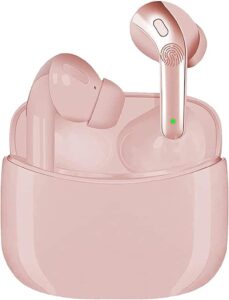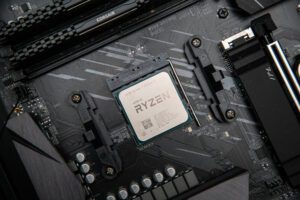To remove white spots on a laptop screen, use a soft cloth and a mixture of water and white vinegar. Gently rub the affected area with the cloth and avoid using harsh cleaners or abrasive materials.
Laptops are essential tools for all kinds of users. Unfortunately, sometimes white spots can appear on the screen, which can be frustrating when you’re trying to work or watch a movie. These spots are usually caused by pressure on the screen, dirt, or damaged pixels.
Fortunately, they can be removed with a simple solution of water and white vinegar and a soft cloth. This method is safe and effective, and will not damage your screen. However, you should avoid using harsh cleaners or abrasive materials, as this can cause more harm than good. In this article, we’ll explore how to remove white spots on your laptop screen and keep it looking pristine.


Credit: www.pcmag.com
Diagnosing The Issue
Identifying The Type Of White Spot And Its Location On The Screen
If you’re experiencing white spots on your laptop screen and want to fix them, the first step is identifying the type of white spot and its location. Here are a few ways you can narrow down the issue:
- Stuck pixel: If the white spot is always on and displays a single color (often white or black), it might be a stuck pixel.
- Dead pixel: If the white spot doesn’t light up and displays black or white, despite the screen displaying other colors, it might be a dead pixel.
- Dust or debris: If the white spot is moveable or disappears when you apply pressure to the screen, it might be dust or debris on the screen.
Once you’ve identified the type of white spot, you can move on to diagnosing the issue further.
Using Software To Test For Dead Pixels
If you suspect that the white spot is a dead pixel, you can use software to test for it. Here’s how:
- Download and install a program designed to identify dead pixels, such as dead pixel buddy or jscreenfix.
- Run the program and follow the instructions to fill your screen with different colors.
- Look for any spots that appear white or black, regardless of the color displayed on the rest of the screen.
If the program detects a dead pixel, you can try to fix it using the built-in tools or by applying gentle pressure to the area. However, be careful not to damage your screen.
Examining The Condition Of The Lcd Screen
If neither of the above methods have helped, you may need to examine the condition of the lcd screen itself. Here are some things to look for:
- Physical damage: Inspect the screen for any cracks, scratches, or other physical damage that might be causing the white spots.
- Loose or damaged connections: Check the cables connecting the screen to your laptop for any signs of damage or looseness.
- Age: If your laptop is several years old, the lcd screen may simply be experiencing natural wear and tear. In this case, you may need to replace it.
By identifying the type of white spot and its location, using software to test for dead pixels, and examining the condition of the lcd screen, you can better diagnose the issue and take the necessary steps to get rid of those pesky white spots on your laptop screen.
External Solutions
Cleaning The Screen
External solutions can be an effective way to eliminate white spots on your laptop screen, especially if they are caused by external factors such as dust or smudges. One of the most basic and straightforward ways to eliminate these spots is to clean the screen.
Here are some steps to help you do this:
- Switch off your laptop and unplug it from the power source.
- Use a soft, lint-free cloth to wipe away any dust and dirt from the screen. Avoid using paper towels or any rough cloth that could scratch your screen.
- You can also use a microfiber cloth that is specifically designed for cleaning screens. This material is gentle and won’t scratch your screen.
- Make sure that the cloth is slightly damp, but not dripping wet, before wiping your screen. Don’t spray any liquid directly onto your screen or use abrasive cleaners as this could damage your screen.
- Gently wipe the screen in a circular motion, starting from the middle and working your way outwards.
- To remove any stubborn smudges or marks, you can use a solution of equal parts of distilled water and vinegar. Dampen the cloth with this solution and gently wipe the screen.
- Don’t forget to clean the frame and keyboard of your laptop as well. Dust and dirt can accumulate here, which can eventually migrate onto your screen.
Adjusting The Screen’S Resolution And Refresh Rate
Adjusting the screen’s resolution and refresh rate can also help to eliminate white spots on your laptop screen. Here’s what you need to do:
- Right-click on your desktop and select “display settings”.
- Scroll down to “display resolution” and select the recommended resolution for your screen. This setting will ensure that the display is properly calibrated, which can help to eliminate any white spots.
- You can also adjust the refresh rate of your screen. A higher refresh rate can help to eliminate flickering and other issues that can cause white spots. To access this setting, scroll down to “advanced display settings” and select “display adapter properties”.
- Click on the “monitor” tab and select the highest refresh rate that your screen supports. Keep in mind that a higher refresh rate requires more processing power, so it may not be suitable for older laptops.
By following these external solutions, you can easily eliminate white spots on your laptop screen and enjoy a clear, high-quality display.
Internal Solutions
Internal Solutions: Updating Drivers And Software
Ensuring that you have updated software and drivers on your laptop is a great way to prevent white spots appearing on your screen. In this section, we will explore the steps you need to take to keep your drivers updated and your software current.
Here are some easy steps you can follow to update your drivers and software:
- Check your laptop’s brand website to see if there are any available drivers and software updates for your laptop. You can find it on the support page of their website.
- Download the latest version of the drivers and install them on your laptop. You can download them directly from the manufacturer’s website or use your laptop’s automatic update feature.
- After you have downloaded the drivers, check to see if there are any software updates available for your laptop. If there are, make sure to download and install them in a timely manner.
- Once you have updated your laptop’s software and drivers, restart your laptop. This step is important because it allows the updates to take effect and ensures that everything is working correctly.
- Run a system check to confirm that your laptop is free from malware and viruses. Your laptop can become infected with malware and viruses, which may cause white spots on your screen.
By following these easy steps, you can keep your laptop up to date and reduce the risk of white spots appearing on your screen.
Tweaking Bios Settings
Tweaking your laptop’s bios settings can help in fixing white spots on your screen. Here’s a sequence of steps you can follow to tweak your bios settings:
- Restart your laptop, and press f2, f10, f12, esc, or del repeatedly to enter the bios setup utility.
- Check to see if there are advanced settings available in your bios, which may be useful in fixing white spots on your screen.
- Disable any advanced configurations that may be causing white spots on your laptop screen.
- Save the changes you have made in the bios and then exit.
- Restart your laptop to see if the white spots have disappeared.
Tweaking the bios settings can be a little tricky, and if you are not sure about what you are doing, don’t hesitate to reach out to a computer technician to help you.
By following the above steps, you can fix white spots on your laptop screen without seeking the help of a professional.
Prevention Tips
Ways To Prevent White Spots From Occurring In The Future
White spots on your laptop screen can be quite frustrating, especially if they appear frequently. Fortunately, there are some simple steps you can take to prevent white spots from occurring in the future. Here are some effective preventive measures you can take:
- Avoid exposure to extreme temperatures – exposure to high temperatures can damage your laptop screen, leading to white spots. Keep your laptop away from direct sunlight, and ensure the laptop’s ventilation system works optimally to prevent overheating.
- Clean your laptop screen regularly – dust, fingerprints, and other debris can accumulate on your screen and cause white spots. Clean your laptop screen regularly with a microfiber cloth to prevent debris build-up.
- Handle your laptop with care – dropping your laptop or applying undue pressure on the screen can cause white spots to appear. Always handle your laptop carefully and ensure it’s securely placed in its case when not in use.
- Install an anti-glare screen protector – an anti-glare screen protector can help prevent reflections and reduce eyestrain. Moreover, it can protect your laptop screen from scratches and physical damage, thereby reducing the risk of white spot occurrence.
- Keep your laptop updated – outdated software can be prone to bugs and glitches that can cause white spots to appear. Keep your laptop updated with the latest software updates to ensure maximum performance.
- Avoid using your laptop in dusty environments – using your laptop in dusty or dirty environments increases the risk of debris accumulation on the screen, leading to white spots. Always keep your laptop away from dusty or dirty environments.
By implementing these simple preventive measures, you can effectively reduce the risk of white spots appearing on your laptop screen, thereby prolonging its lifespan.
Frequently Asked Questions For How To Remove White Spots On Laptop Screen
What Causes White Spots On A Laptop Screen?
White spots on laptop screens may be caused by dead pixels, pressure marks, or screen damage.
Can White Spots On A Laptop Screen Be Fixed?
Yes, white spots on laptop screens can be fixed using software or physical methods.
How Can I Prevent White Spots From Appearing On My Laptop Screen?
To prevent white spots on laptop screens, avoid applying pressure, keep the screen clean, and use screen protectors.
Conclusion
Now that you know how to remove white spots on laptop screens, you can comfortably tackle this issue without seeking professional help. Remember to always use cleaning solutions that are safe for electronic screens to prevent further damage. Regular cleaning and proper handling of your laptop can also go a long way in preventing white spots from developing.
It is vital to note that prevention is always better than cure, and you should always strive to take adequate care of your laptop screen. With the right knowledge and tools, you can keep your screen looking great and extend the lifespan of your laptop.
So, go ahead and try out these methods, and you’ll be amazed at how easily those annoying white spots disappear.



